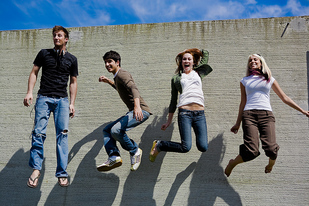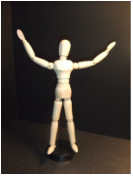- Home
- Prez. handout sets
- Non-English majors (warm-ups & tasks)
- ELT & the Science of Happiness (Positive Psychology)
- DIY Neuro-ELT
- Physical Activity in the ELT class
- Energy breaks
- Extensive Reading
- Reading aloud
- Questioning comprehension questions
- Language Learning & the Senses
- Task Planning
- Innervoice
- Imagination (mental imagery/guided journeys)
- Mind Maps
- Speaking tasks (dialogs)
- Talking about Japan
- Misc. fluency tasks
- English in 3D (a fresh look at traditional tasks)
- Engagement
- Firsthand, misc
- Odds and ends
- Learning to embrace rainy season
- Songs for kids' classes
- My students teaching kids
- John & Marc's BBQ
- Contact Marc
- Thanks, Mike!
- Extensive Reading
- Listening Links
- transfer
- Tohoku ELT EXPO2019
- Aomori BOE resource page
- Making learning visible Firsthand
- Christmas Party 2013
- Teach your passion
- Think page sign up
- •••
- TYS
- Kansai JACET links
- Marc's morning routine
- The History of your Future Success
- Mindsets: fixed & growth plus the Power of YET
- EF song project
- EF2 song project
- PELT
Physical Activity in the ELT class

Why ask students to do activities that involve movement? Lots of reasons. In the "language learning and the senses" part of this website, I point out the the more sense we use, the more we learn. Movement is important for everyone. Movement provides a change of pace -- and the brain loves and needs novelty. Our ancestors, back on Serengeti in Africa, walked 10-20 km a day. It is only recently that we've quit moving so much -- and our evolution hasn't caught up with that. (Medina, J. Brain Rules (2014), Seattle, WA.:Pear Press). When we sit for 20 minutes, there is a build up of blood from the brain to the feet, legs and butt. Just moving for one minute gives a 15% increase of blood and oxygen to the brain. (Sousa, D. How the Brain Learns. 2011. Thousand Oaks: Corwin Press.
These pages will give your students lots of activities that include language and physical movement. I hope it moves you (and them).
These pages will give your students lots of activities that include language and physical movement. I hope it moves you (and them).
NEW An article The Movable Class - How to Class-Manage for more Active and Healthful Lessons by Kevin McCaughey. From the U.S.State Dept's Forum. Lots of good, practical ideas.
A PowerPoint i used in early 2016 on the theme: Let's get physical: The brain/body connection. You are welcome to use it with your students. Click the title. (Not for use in commercial teacher training situations.) And here are the references for that workshop

Here is a handout called 5-minute physical tasks for the classroom. There are 15 short tasks. Some review language. Others are "energy breaks" that get students moving (along with the oxygen to their brains). Note that some involve touching. Make sure all students are comfortable with that or have some other options. And click the title for Let's get physical, a handout with many warm-up activities involving both movement and language.

Energy Breaks. These are short tasks to give students movement and energy.
There are several short PowerPoints you might want to use. Each introduces one physical+ language task and a "brain byte" of useful neuroscience information. Click the picture to go to that page.
There are several short PowerPoints you might want to use. Each introduces one physical+ language task and a "brain byte" of useful neuroscience information. Click the picture to go to that page.

Power Poses are physical positions that increase testosterone (the "power" neurotransmitter) and lower cortisol (the stress hormone). Here are 4 Power Poses (click to download) to use with your students. In the activity, they use TPR (Total Physical Response) to help their partner hold the pose. Power Poses are based on the work of Amy Cuddy of Harvard. Here's an academic article by Cuddy and D. Carney and A. Yap of Columbia explaining the idea. Here a Business Insider article that summarizes Cuddy' TED talk. I like adding positive self-talk ideas from Ethan Kross (Michigan). Kross found that self talk in the 3rd person (use your own name) is strongest. Here's an academic article by Kross. And here's the PowerPoint I use with my own students for Power Poses. It includes the slides I use to have students both decide their own positive self-descriptions and change them to the third person. And here is a simpler version. The teacher "TPR's" (can I use that as a verb?) the student through "King/Queen of the world", introduces the "positive self-talk/linguistic distancing" information, then has them do two Power Poses in pairs.
Finally, have a look at Amy Cuddy's TED.com talk. It is one of the top 10 TED talks ever.
Finally, have a look at Amy Cuddy's TED.com talk. It is one of the top 10 TED talks ever.

Svetlana Kandybovich, a colleague in Minsk, Belarus, added a page called, "Let's go physical" on her blog ELT-cation. Click HERE for the page.